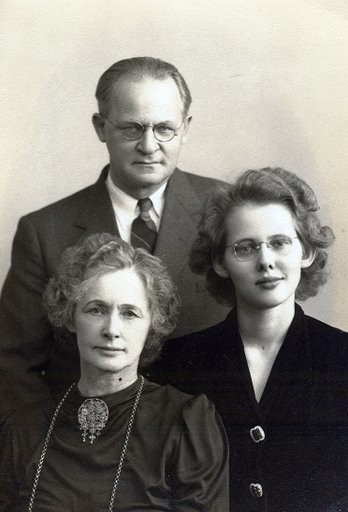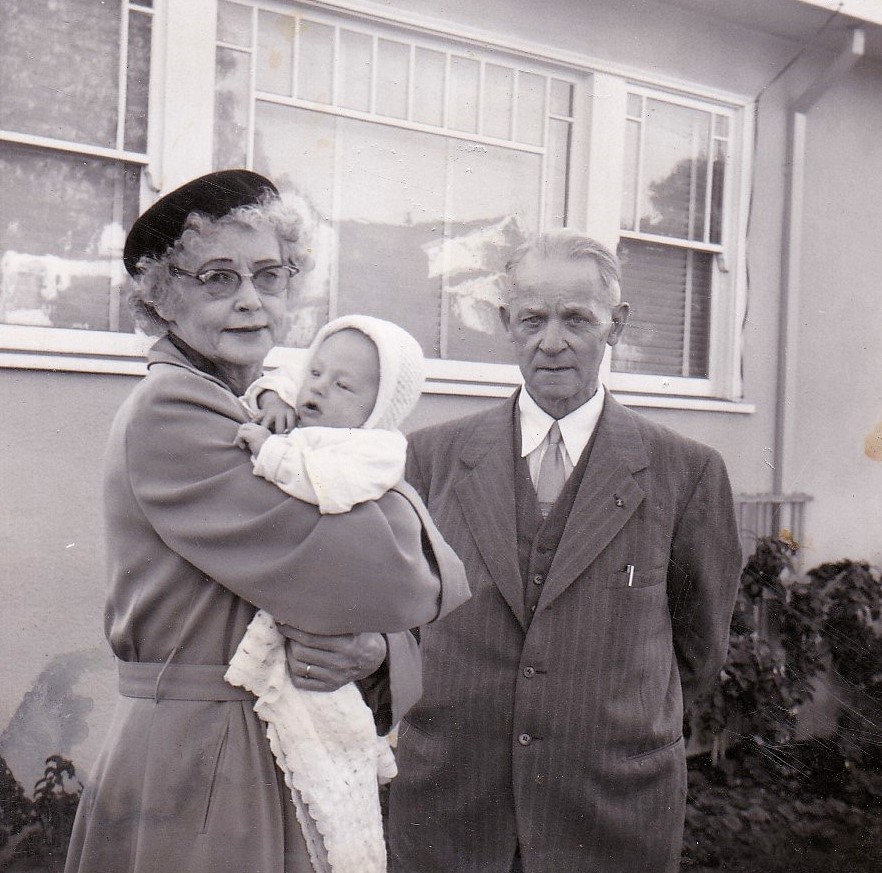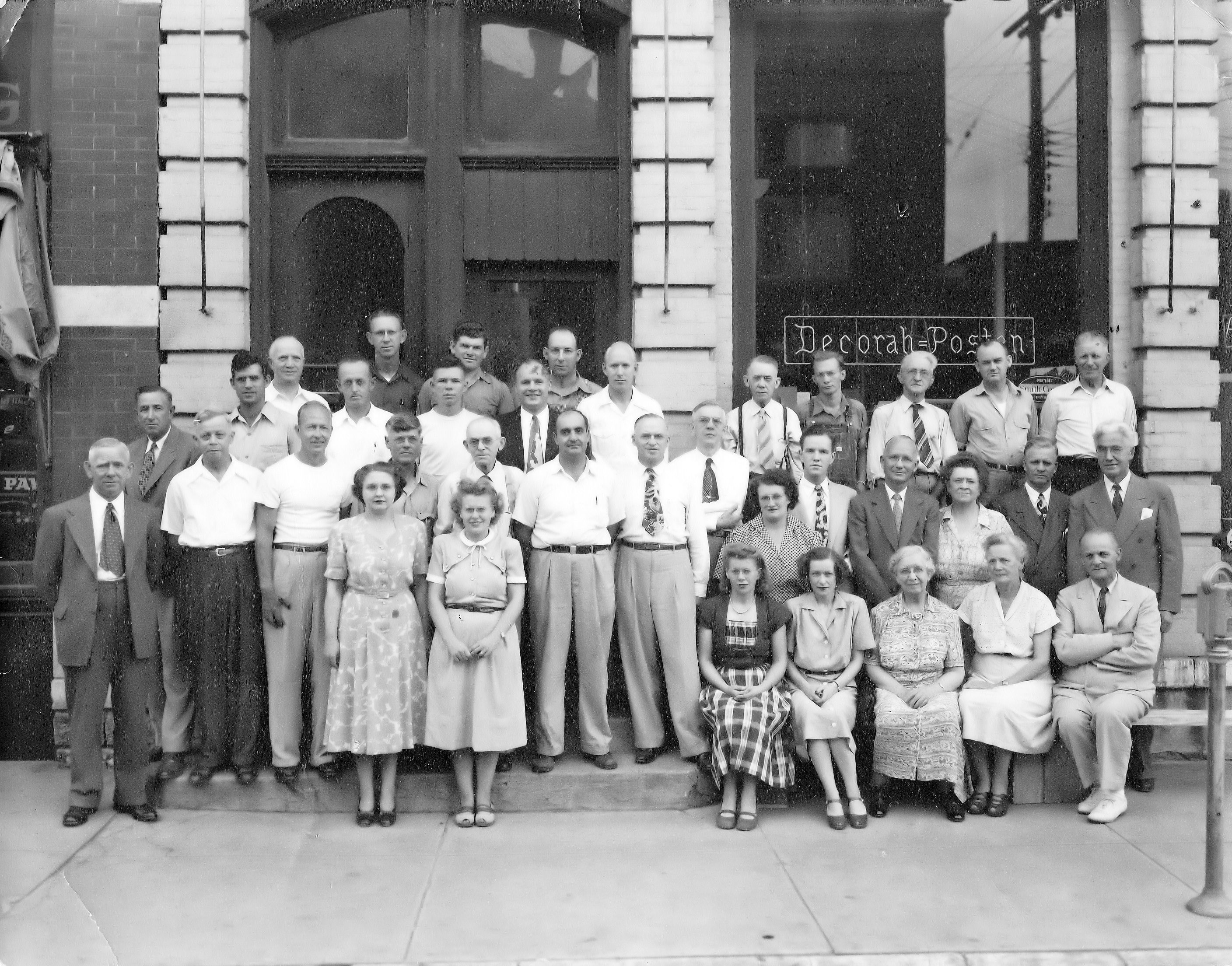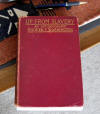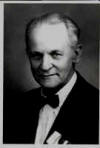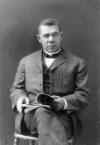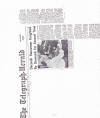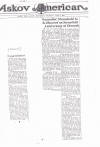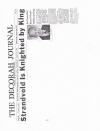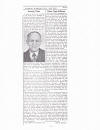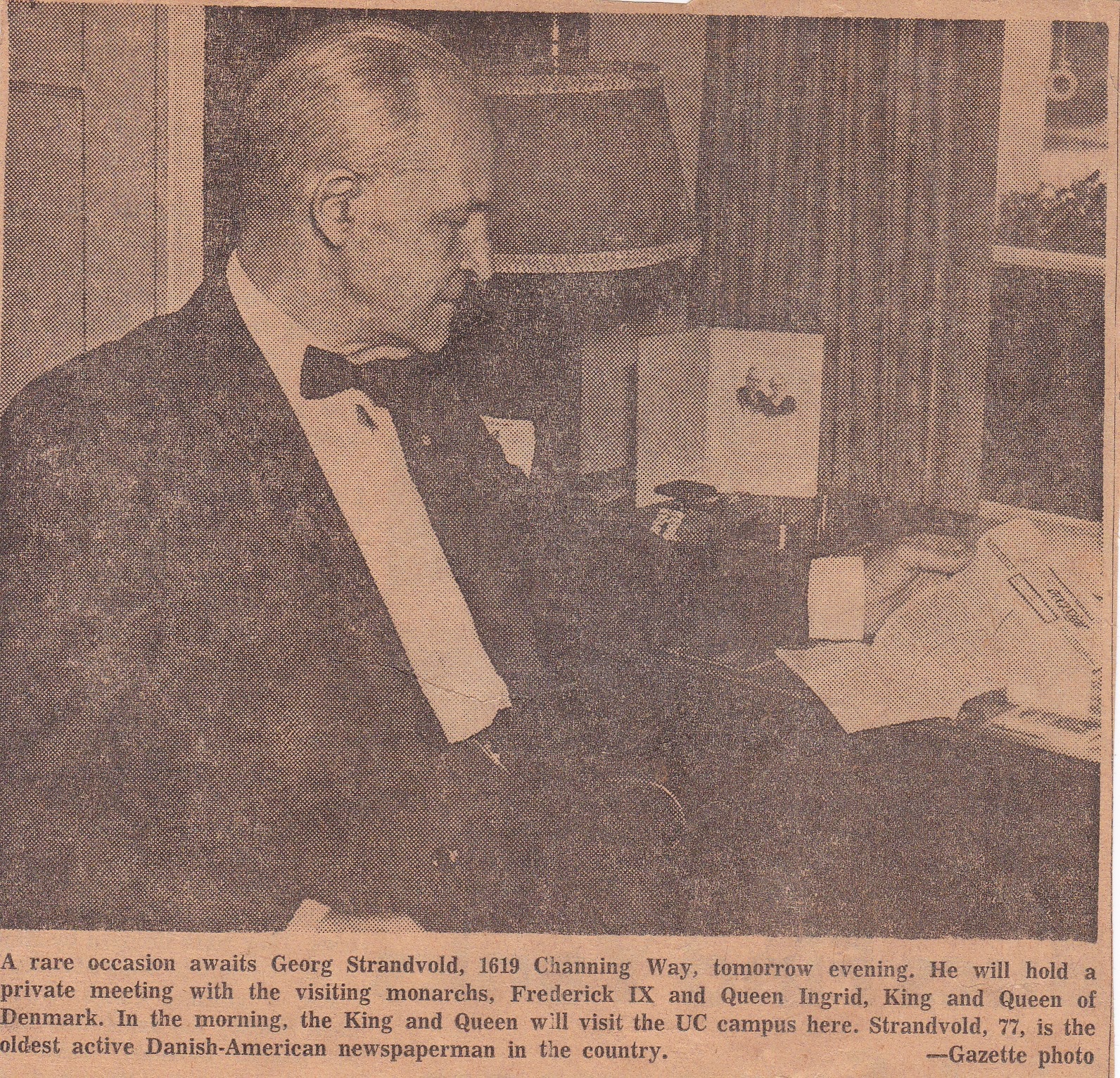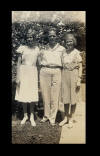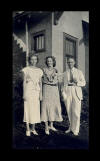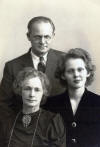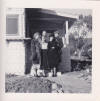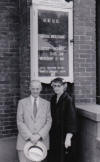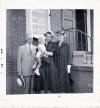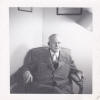|
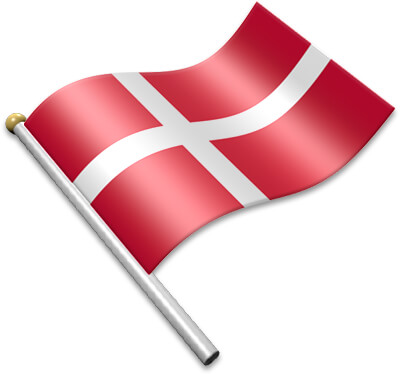
|
|
Georg
Sophus Strandvold (1993-1960) was a celebrated editor of a
Norwegian-language newspaper and author of thousands of poems and news
articles in Danish and English. Early in his career
he was the first person to send transatlantic news reports from
America to Scandanavia. For 31 years, he was on the editorial
board of the
Decorah-Posten, a prominent Norwegian-language newspaper.
"He served in pracitally every medium of the Scandanavian press
(in America) from Freenwich Village to the Rockies". For 57
years, Georg wrote for the best known Danish newspapers in
America: Norden, Nordlyset, Den Danske Pioneer, Ugebladet,
Dannevirke, Bien as well as the Racine Journal and the Grand
Forks Herald. For his
contributions to the Danish resistance of German occupation
during the Second World War, in 1946, the King of Denmark,
King Christian X, awarded him the
Medal of Liberation. And, seven years later, on June 17,
1953, he was knighted by
King
Frederick IX with the
Dannebrogordenes Haederstegn (Cross
of Honor of the Order of the Dannebrog).
Photo below is the staff of the Decorah-Posten in the 1940's. Georg is far right, first row.
Georg was born June 5, 1893 in Roskilde, Denmark. He was the son of a talented and aspiring editor, who might have gone far. Unfortunately, Henrik Strandvold had a drinking problem which reduced his family to poverty. At age 14, Georg had dreams of following in his father's footsteps but was sent out as a herd boy on the Jutland heath. A year later some of his articles and poems had been accepted by provincial papers. He was a product of a distinctly Danish form of education known as the "folk high school", attending both the Hindholm and Grand View schools, where "wisdom flows without degrees". While a student at Grand View, Georg answered Ivar Kirkegaard's advertisement for an assistant at "Norden", a new Danish monthly paper in Racine, Wisconsin. And so, he emmigrated to America in 1902 at the age of 19. The next step for Georg was to show fluency in English. He would study English 16 up to hours a day. Ultimately, he demonstrated his fluency by translating President Theodore Roosevelt's speech at the laying of the foundation for the 1904 World's Fair in Saint Louis. Georg then began his formal newpager career at the age of 20 in 1903 with the Racine, Wisconsin "Journal". As a cub reporter Georg interviewed a U.S. senator and wrote four newspaper columns of copy filled with quotes. The Senator, who saw the article, praised him for his accuracy, not knowing that the entire interview had been written from memory since Georg didn't bother with notes! Georg relocated to New York shortly thereafter and spent five years as co-editor and editor of the Danish paper "Nordlyset" and as an Assistant in the reference department of the New York City Library, where he earned extra money by translating doctoral theses from German, a language he also learned. The lecture bureau of New York City's Board of Education sent him out to inform American audiences about Deanish politics, customs and literature. During this time, while he was working at Nordlyset, Georg was the first person to send a newspaper article to Denmark via transatlantic cable and pioneered the first transatlantic news service from America to Scandanavia as the "Marconi Correspondent" for "Politikken" in Copenhagen and "Stockholmstidningen" in Sweden. About 50 words a day were sent in English to the London office of Politikken where they were translated into Swedish and Danish in the respective home offices. Unfortunately, Georg's messages were sometimes garbled in translation, causing him embarassment and "heaping criticism on his head". Georg's memoirs also note a rather interesting encounter: In 1906, he had written about iconic African-American leader Dr. Booker T. Washington and his Tuskegee Institute for Zacharias Nielson's "Sondagsbladet" in Denmark. To ensure his facts were correct, Georg had corresponded with Dr. Washington, who later asked for an Ensligh resume of the article. After Georg sent off the translation he received an autographed copy of Washtington's famous book "Up From Slavery", his autobiography. Then, about a year later, as Georg was casually walking on a sidewalk along Central Park, he saw a man who closely resembled a picture he had seen of Dr. Washington. He inquired of the man if he was Dr. Washington to which the man responded: "Yes". When Georg replied with his own name, Dr. Washington inquired if Georg had received the autographed book he sent. Yes, he had. They then walked up and down the sidewalk for a short while and talked about Denmark, and the Danish folk schools in particular, which, to a certain extent, had been a model for Washington's famous school. Incidentally, in 1910, Dr. Washington actually visited Denmark to learn more about the folk schools, as the guest of King Fredrick and Queen Loiuse and, to the general amazement of "white America", the Danish royal Court had as little racial prejudice as President Roosevelt had shown Dr.Washington when he was invitied to the White House, for a 1901 visit which ignited considerable outrage among certain segments of the American population. Photos of the actual autographed book given by Booker T. Washington to George Strandvold are below.
While in New York, Georg also served on the welcoming committee for Dr. Frederick A. Cook, who claimed to have discovered the North Pole and was a Scandanvian hero. Cook was scheduled to visit New York City and a big celebration was scheduled. Georg, who was an accomplished public speaker by this point, was chosen to make the main speech. However, some members of the community grew leery of having such a young man give the speech and finally substituted an older man. When the new speaker visited Georg, it did not seem unusual for him to review Georg's notes for background. However, when the speech was delivered a few days later, Georg was in the ususual position of having to listen to his own speech coming from someone else's lips! By 1916, Georg had moved to Minneapolis, Minnesota where he met his second wife, Johanne Petersen aka "The Prarie Princess". The prarie writer, Carl Hansen had brought about their meeting in New York some years before. Johanne's brother, Hjalmar Petersen, was a Danish-American politician who later became the Governor of Minnesota briefly in the 1930's. He was on President Roosevelt's team. He even had a book published about him by Garrison Keillor's brother Steven. Georg and Johanne's daughter, Olga Anna, was born in Minneapolis on October 20, 1919. She was their only child, but her family included two half-brothers, Kaj Strandvold and Carl Strandvold, and two adopoted cousins. Kaj and Carl were Georg's sons from a prior marriage and the cousins were Lauritz Petersen and Anna Mae Petersen Justin, "Figsa", children of Johanne's brother Aage Petersen. Shortly after Olga's birth, the family relocated to Grand Forks, North Dakota. After immigrating to America, Georg returned to his homeland only once, in 1920, just after Olga was born, to visit his parents, three sisters and a brother. In the early 1920s, the Strandvold family moved to Decorah, Iowa when Georg became associate editor of the Decorah-Posten. Olga graduated from Decorah High School, where she was the winner of a statewide academic competition, and Luther College, also in Decorah, before completing her Master's degree in the prestigious Writer's Workshop at the University of Iowa. After graduating from High School, however, in 1937, she spent a year in Denmark with her Mother to become friends with her many cousins and become more proficient in the Danish language. Georg remained in America. During World War II, many Americans were highly critical of the Danes' seeming instant capitulation to the Nazi invasion. Georg wote: "There is no report to the effect that the Danes resisted by force; they evidently realized it would have been suicide." But, soon he was able to describe the growing resistance movement in Denmark and gave numerous speeches on this subject. Years later, Tyge Lassen, curator of the "Udvandrerarkivet" (Danish-American archives) in Aalborg, Denmark, concluded: "Georg Strandvold was in the front ranks of our countrymen in America who undertook the difficult and in the beginning thankless task of removing the stains from Denmark's shield by spreading information about the Resistance Movement. Let us never forget that this did unspeakably much to change contempt to admiration. By war's end Denmark was treated and considered as an Allied country, which was liberated, not occupied anew". Georg was thusly awarded King Christian X's "Liberation Medal". Just after Georg turned 70 years old, on June 17, 1953, King Frederick IX conferred upon him the "Royal Order of the Knight of Dannebrog" through the Ambassador to Denmark in Washington, DC. The coveted medal bears the Danish words "Gud og Kongen", meaning "God and the King", and several important dates, including the year 1219, which commemorates the origin of the flag of Denmark. This marked the second time that Georg had been knighted by Kings of Demark. A contemporary, Axel H. Andersen of the Midwest Scandanavian in Minneapolis, paid this tribute: "During a century of immigrational transplantation from Denmark there have been few Danish editors indeed who possess the gift of constant interpretation of world events. Georg Strandvold stands at the top. He is filled with statistics, logic, and pros and cons of the world scenee. His most lasting work may be found in "History of Modern European Literature" published by Columbia University." Scans of some newspaper articles commemorating this event are below:
Writing was what he wanted and as he wanted. Georg showed a great enthusiasm for his profession. When he was 70, he still ran off to work like a young reporter. His sister-in-law, Medora Petersen, recalled: "The most vivid impression I have of him is that he preferred doing his work to everything else - even when he was on vacation.". When, for example, international news was breaking right and left he thought nothing of walking down to the office at 5 in the morning in subzero weather. Toward the end of his career, in his late 70's Georg continued writing international new columns in Danish for Den Danske Pioneer in Chicago and in English for the Askov American, a newspaper founded by his brother-in-law Hjalmar Petersen. When Georg passed, his daughter, Olga, continued writing the column for almost 50 more years. His last assignment was as co-editor with Dr. Paul Nyholm of Dansk Nytaar. Just before he passed in 1960, Georg actually got to meet the King Frederic IX and Queen Louise of Denmark while they were visiting America and touring UC Berkeley, near where Georg and Johanne had made their final home at 1619 Channing Way, Berkeley, California.
Shorlty after Georg's passing on December 6, 1960, at age 77, a bronze memorial plaque was placed in "Lincoln Memorial Log Cabin" at Rebild National Park in Rebild, Denmark in his honor. The presentation by made by Georg's sister, Hertha Strandvold, at a special ceremony on July 5, 1961. The dedicatory address was delivered by Tyge Lassen, editor and archivist of the Danish-American Archive at Aalborg, Denmark. The plaque had the following inscription: "Georg Strandvold, Knight of Dannebrog, Chr: X's Liberty Medal, born June 5, 1883, at Roskilde, emigrated to America 1902. Died December 6 at Berkely, Calif. Writer and editor in America during 57 years, Loyal spokesman for Denmark." Unfortunately, the plaque was lost in a subsequent fire Rebild. Georg Strandvold's long, energetic, and varied career touched the lives of thousands of his readers. Dr. Paul Nyholm, his last co-editor, summed up his life: "He made a contribution which [Danish-American] historians of the future will recognize as having been of greatest importance." Georg Strandvold Biography by Olga Strandvold Opfell Newspaper Clippings about Georg Strandvold compiled by Olga Strandvold Opfell Written by Chris Opfell, kajguguy03@aol.com, Grandson of Georg Strandvold |
||||||||||||||||
|
|
|
.. |
|
|
|
. |
|

